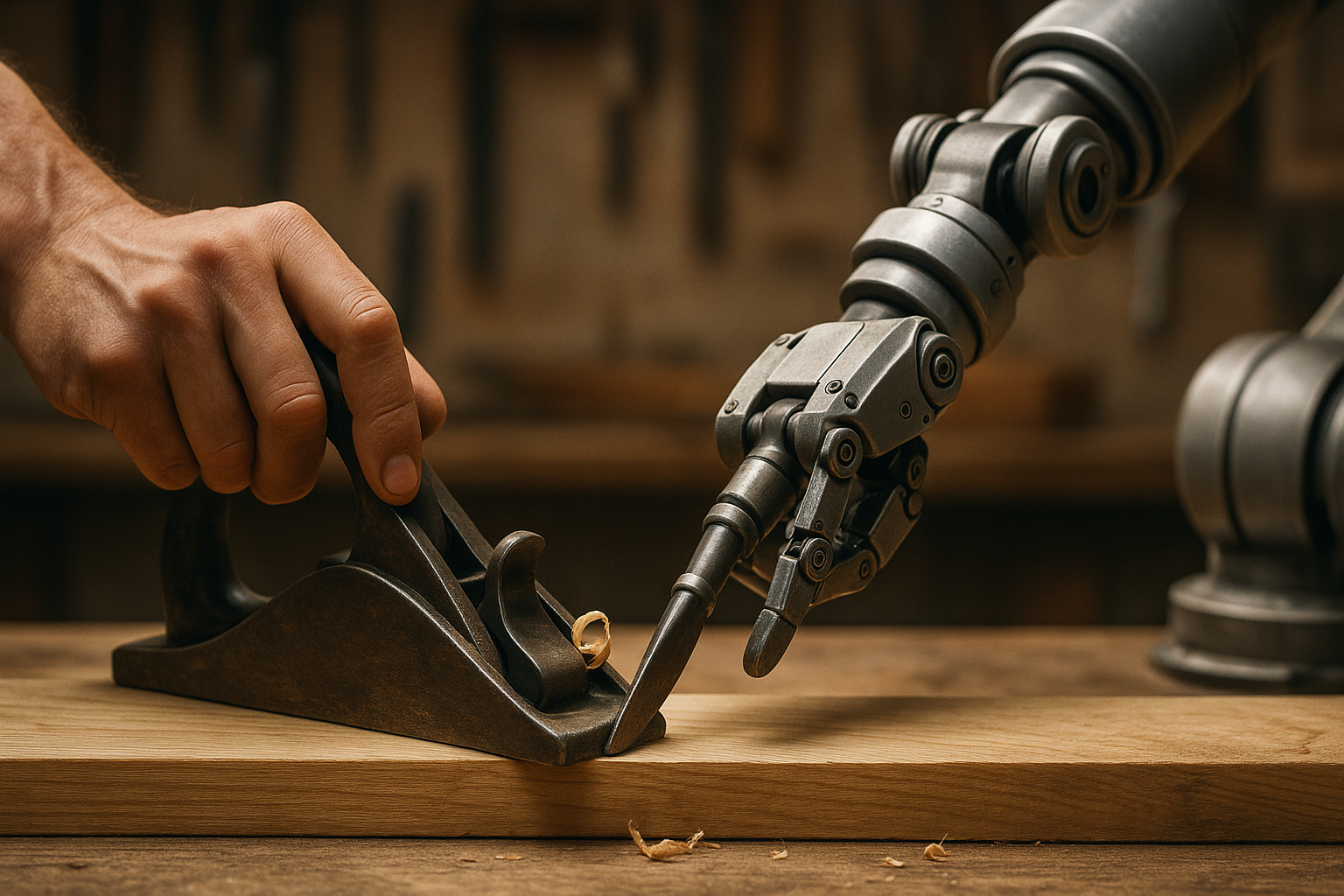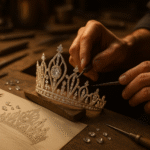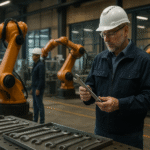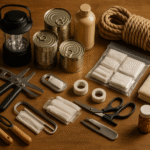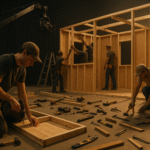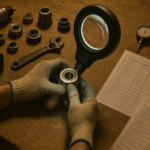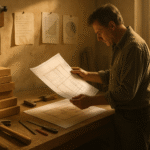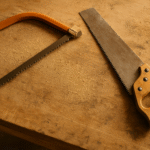Across workshops and maker spaces, technology is quietly changing what it means to create by hand.
Smart saws calibrate their own angles, AI drills prevent over-torque, and automated cutters complete precise patterns without human error.
While these advances improve safety and efficiency, they also raise an uncomfortable question — if machines handle the precision, what’s left for craftsmanship itself?
Automation and the Disappearing Instinct
Modern tools think faster than the human hand.
They measure resistance, detect flaws, and adjust in milliseconds. The traditional craftsman’s role — sensing material tension, compensating mid-cut, or perfecting technique through experience — is gradually shifting toward supervision rather than skill.
This transformation mirrors the trends explored in The AI Toolbox: Will Smart Tools Replace Skilled Craftsmanship?, where intuition and algorithm meet on the same workbench.
The risk is subtle but real: efficiency could replace mastery as the new measure of competence.
Precision Without Understanding
Smart systems excel at accuracy, but precision alone doesn’t define art.
Craftsmanship is as much about the why as the how. When automation handles material behavior, humans lose the sensory understanding that once guided judgment — the vibration of the blade, the resistance of wood grain, the smell of freshly cut material.
This sensory bond is the foundation of skill, and as Are Smart Workshops Making DIY Too Easy? points out, convenience often replaces curiosity.
The danger isn’t bad craftsmanship — it’s forgetting what craftsmanship feels like.
Technology as a Teaching Partner
Still, technology doesn’t have to erase artistry — it can preserve it.
Smart tools now record data on torque, speed, and pressure, providing a digital record of what makes each technique effective. Over time, this information can teach new makers how to achieve results that once required years of apprenticeship.
AI-assisted systems, as seen in Inside the Smart Workshop: Connected Tools That Think for You, are capable of reinforcing best practices without replacing decision-making.
Used wisely, they can turn craftsmanship into something measurable — not mechanical.
Preserving the Human Element
True craftsmanship has always balanced precision with imperfection — the individuality that gives an object character.
Machines can replicate a shape, but not the judgment behind it. The slight adjustments a human makes mid-task — a lighter cut, a changed angle, an aesthetic choice — remain beyond code.
The future of craftsmanship depends on merging intuition with innovation.
As Repair, Don’t Replace: The New Ethics of Modern Craftsmanship highlights, mastery today means understanding how to work with tools, not be guided entirely by them.
The New Definition of Skill
In the coming decade, the best makers won’t resist technology — they’ll redefine it.
The art of craftsmanship may not vanish; it’s evolving into something new.
Skill is no longer just the ability to shape materials — it’s also knowing when to trust the machine and when to take control.
The challenge isn’t that we’re losing craftsmanship.
It’s ensuring that, in the pursuit of perfection, we don’t forget the imperfection that makes craft human.
